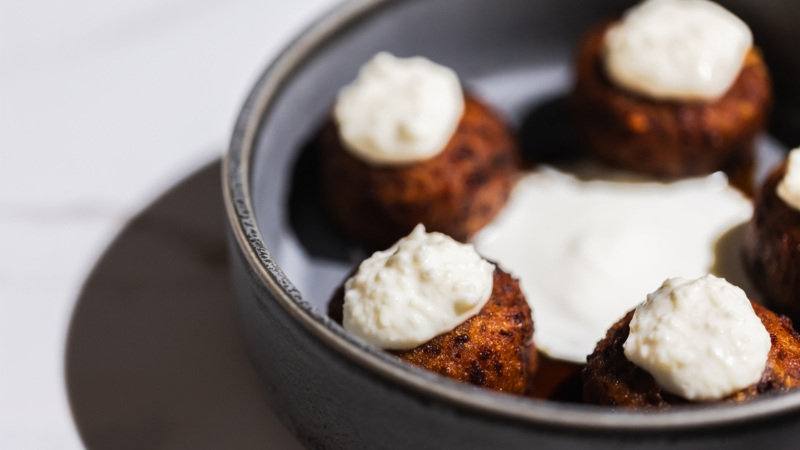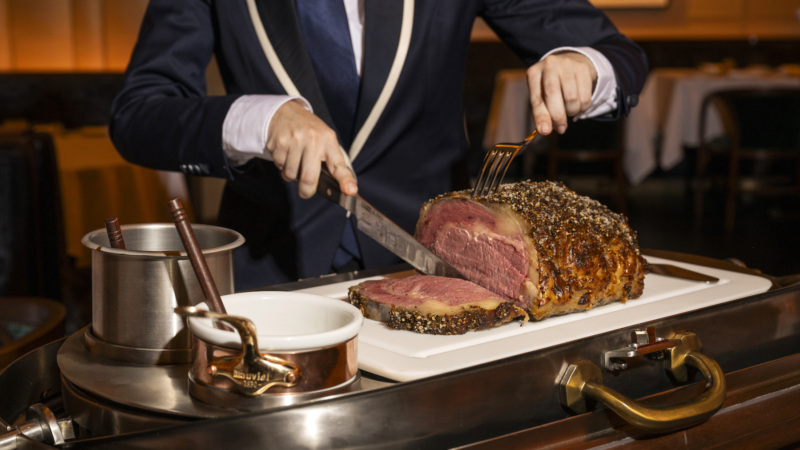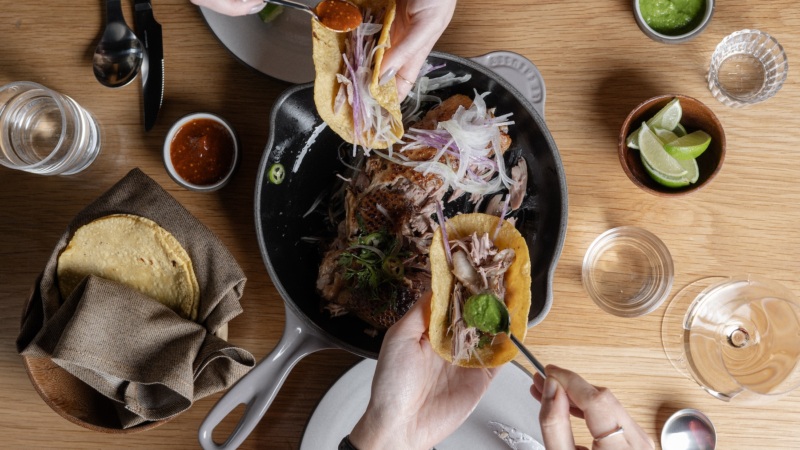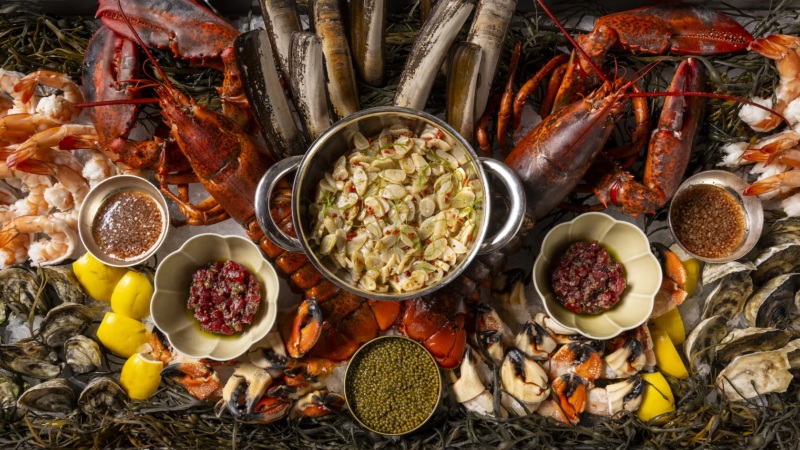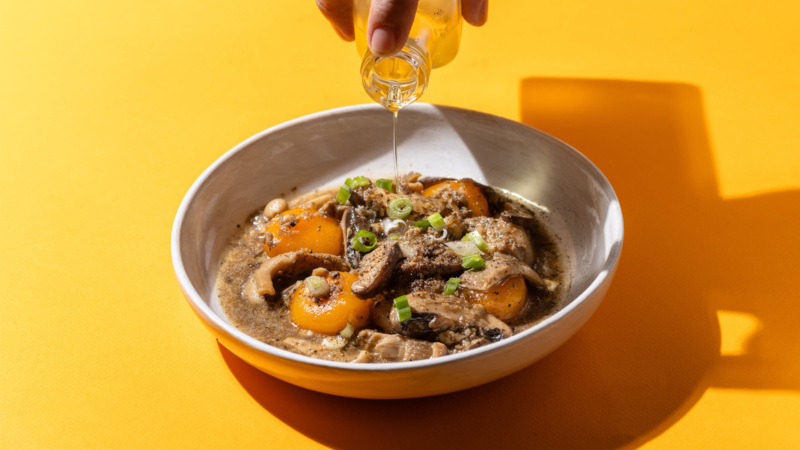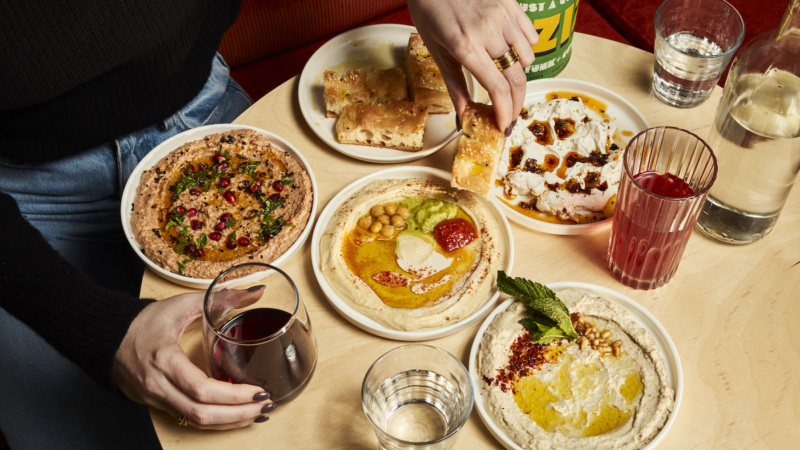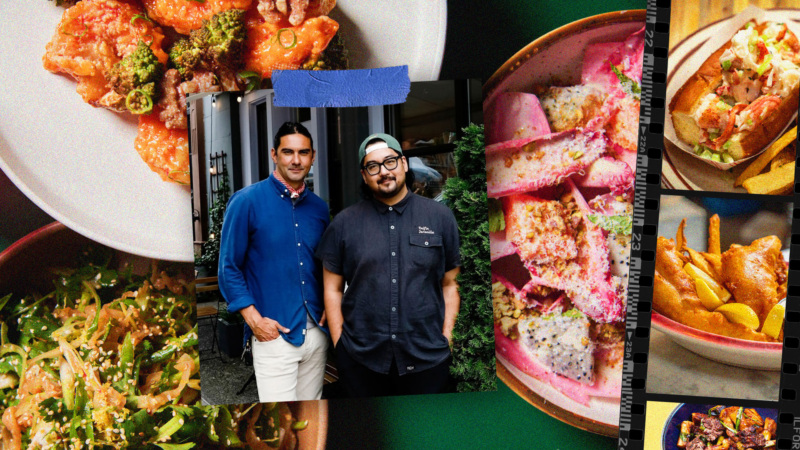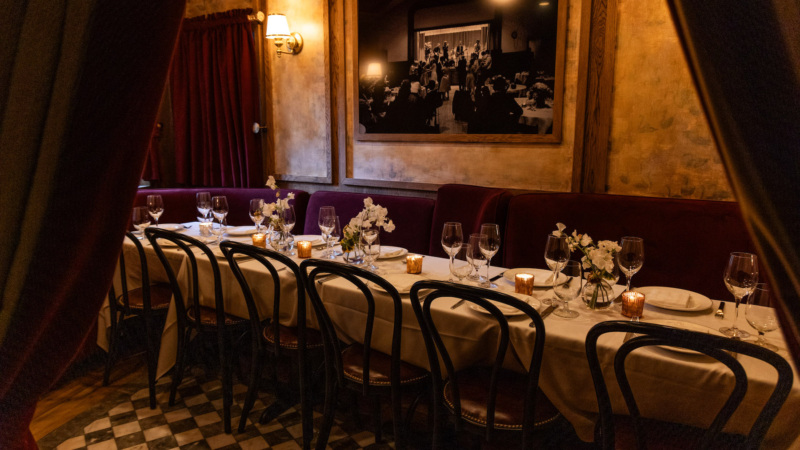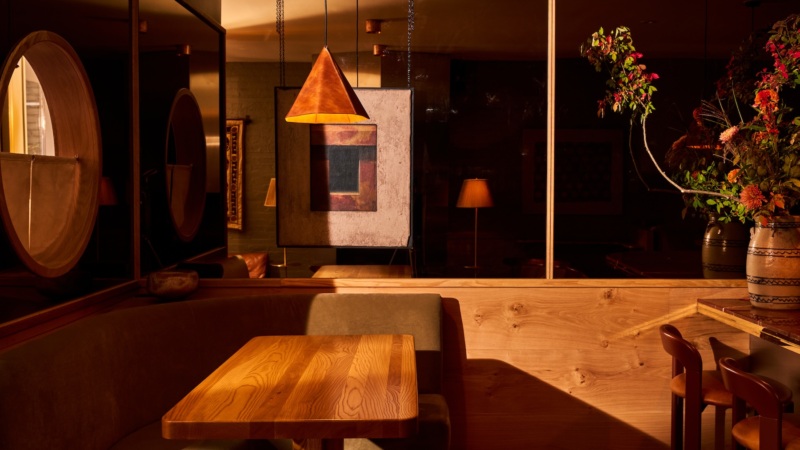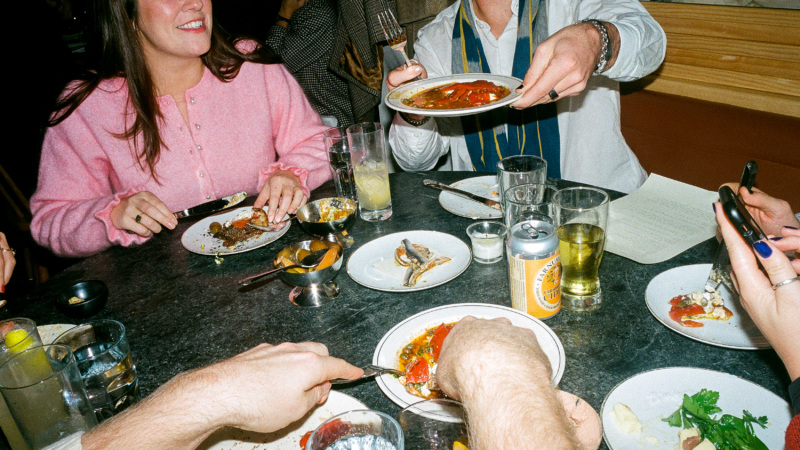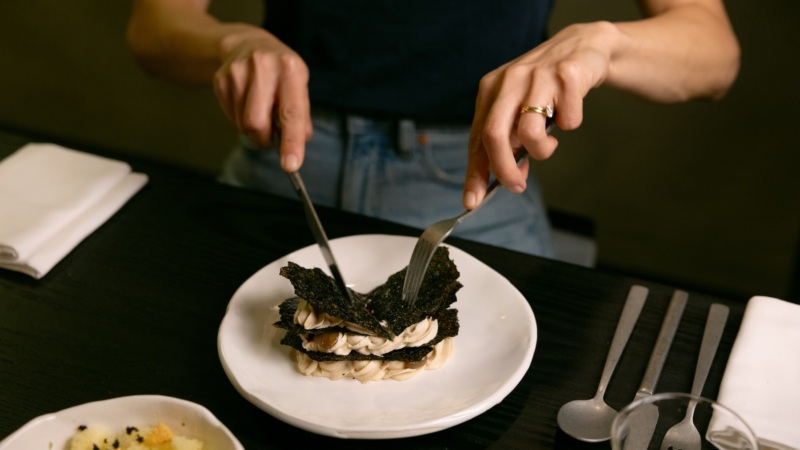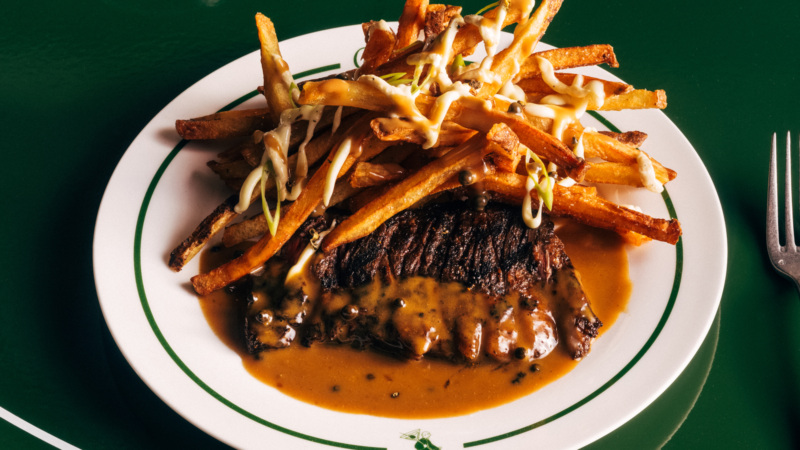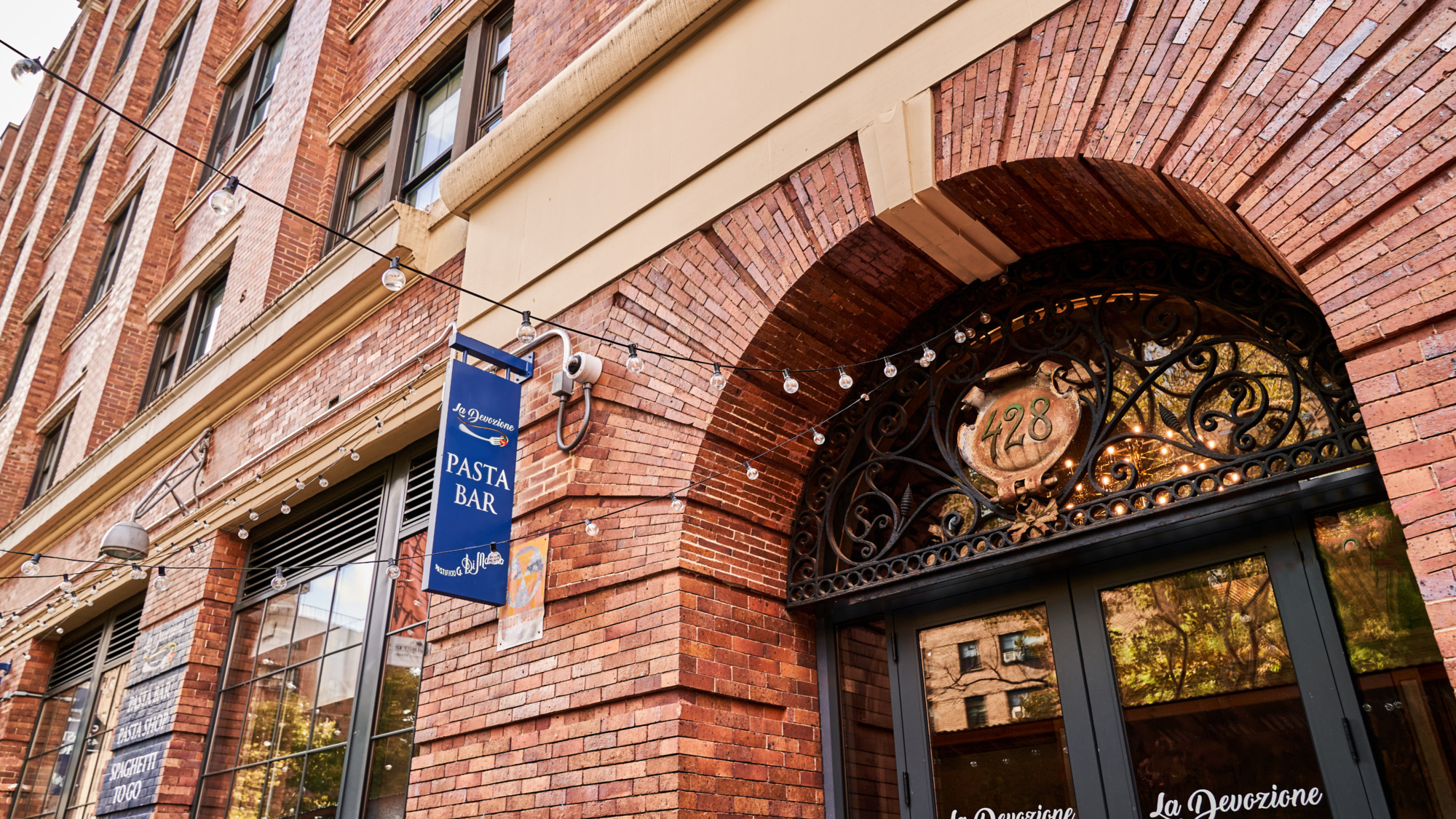
Five Things to Know About La Devozione, Inside Chelsea Market
Before you go to a restaurant, what do you want — or need — to know most? In our series, The Rundown, we’re sharing all the essentials about newly opened (as well as some of your favorite) restaurants.
In today’s installment, we’re turning our spotlight on La Devozione at Chelsea Market, the first international outpost from the 110-year-old, family-run dried pasta company Pastificio Di Martino, based in Gragnano, Italy, the historic “Città della Pasta” (City of Pasta).
For third-generation CEO Giuseppe Di Martino, La Devozione is meant to be New Yorkers’ one-stop shop for all things pasta.
La Devozione was designed with every possible occasion for pasta consumption in mind. At the retail shop, a consultant recommends the best pastas, taking into account the ingredients customers typically have at home and the kinds of sauces they prefer. A takeout counter doles out cacio e pepe pasta for those on the go. The casual A Tavola dining section serves what Di Martino deems “the most orthodox recipes” straight out of Italy a la carte. And The Oval pasta bar deals in “experimental and avant-garde” seasonal tasting menus, including the likes of a coffee-cooked pasta puff.
New York City, in particular, represents a test market for the company’s global expansion, which is currently under consideration. “If we can make it here, we’re also going to move it to other places in the world,” Di Martino says. With stakes so high in a city so full of red-sauce joints, he’s showing off his best cards with La Devozione. Here are a few of his big bets.
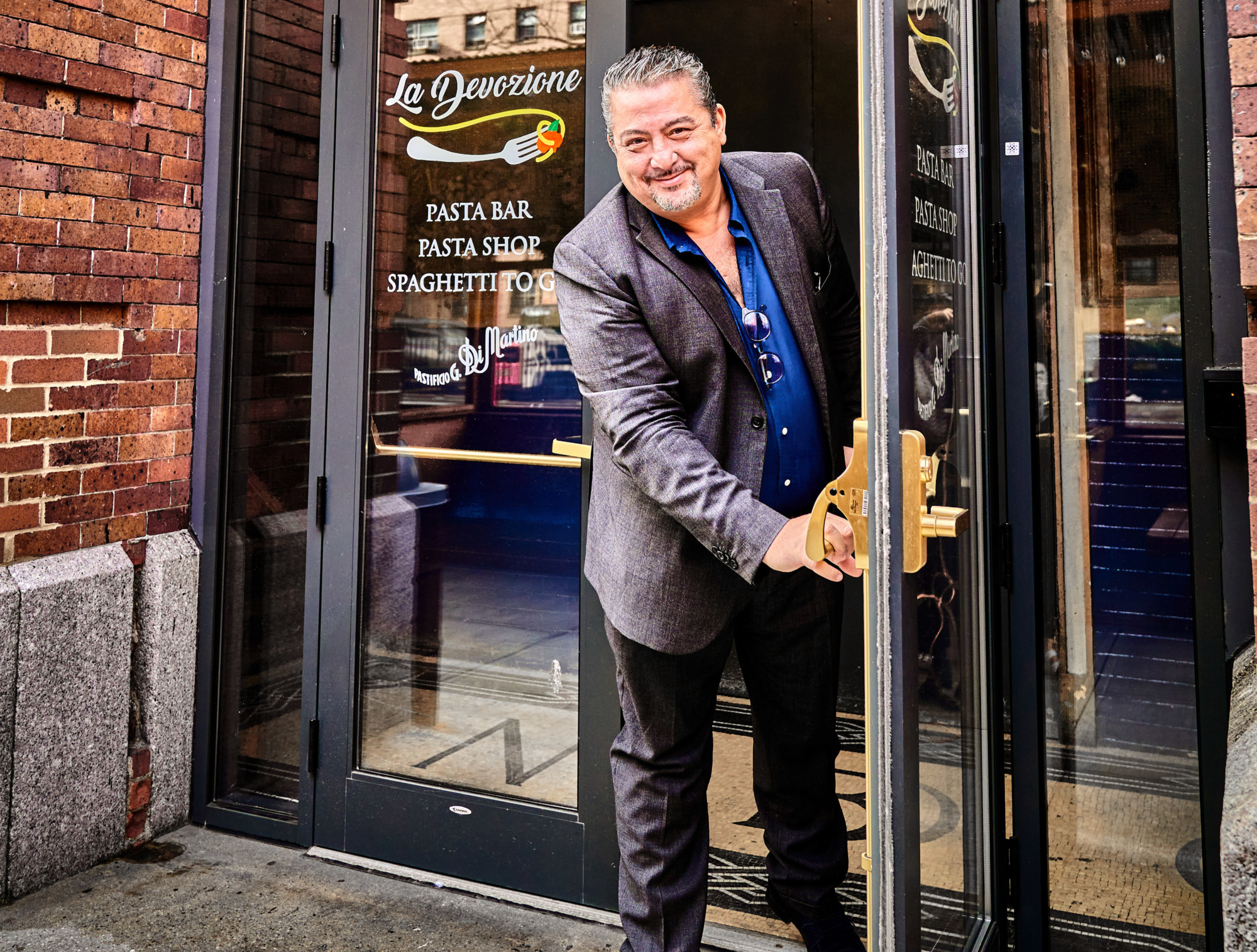
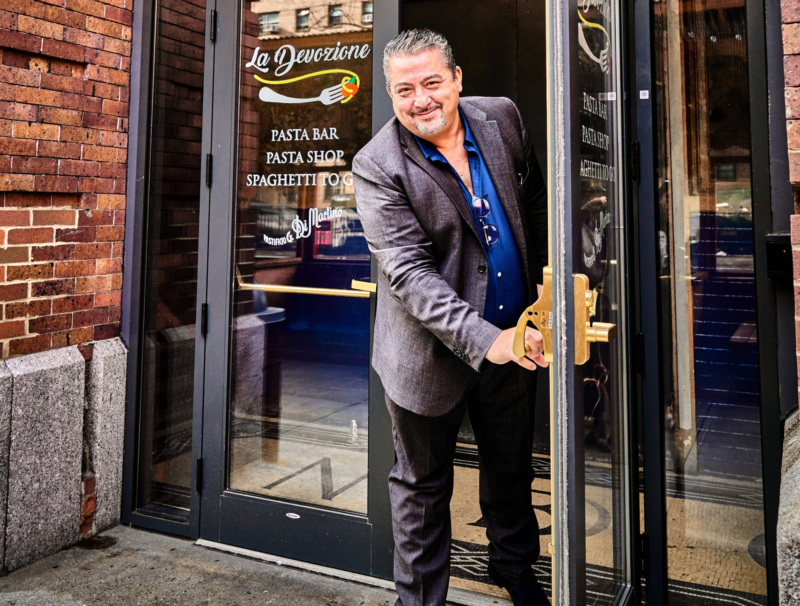
1. They have the Champagne of pasta on offer.
The pasta from Pastificio Di Martino is produced in Gragnano, near Naples in southern Italy’s Campania region, where pasta-making traditions date back to the 1200s. Even the buildings and streets were designed to optimize production. In 2013, Gragnano pasta (like Champagne) was designated a Protected Geographical Indication by the European Union. That certification requires strict adherence to locally sourced raw materials (durum wheat semolina from the farms of Puglia and low-mineral spring water from the Lattari Mountains) and traditional techniques (slow extrusion of the dough through bronze dies — not modern Teflon ones — and slow drying at low temperatures). The result produces a rich durum wheat flavor and a rough, dusty surface that retains more sauce.
For five years, Giuseppe Di Martino has been planning to bring his time-honored pasta to New York’s teeming market. This fall, La Devozione finally swung its doors open. “It’s like Dom Perignon opening a Champagne bar,” he says. “We’ve been making pasta since 1912. So, we know every secret, every angle, every corner of pasta.”
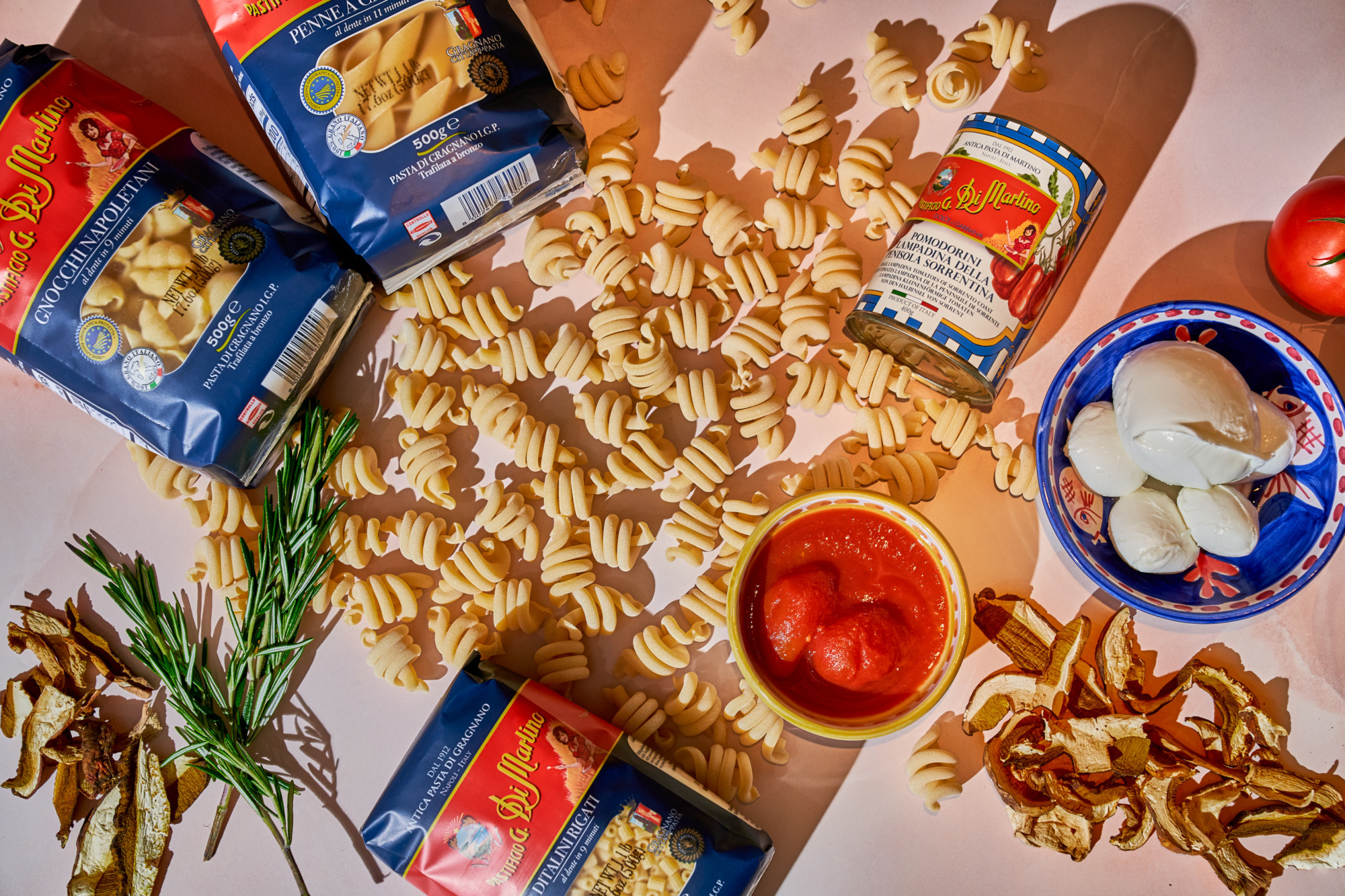
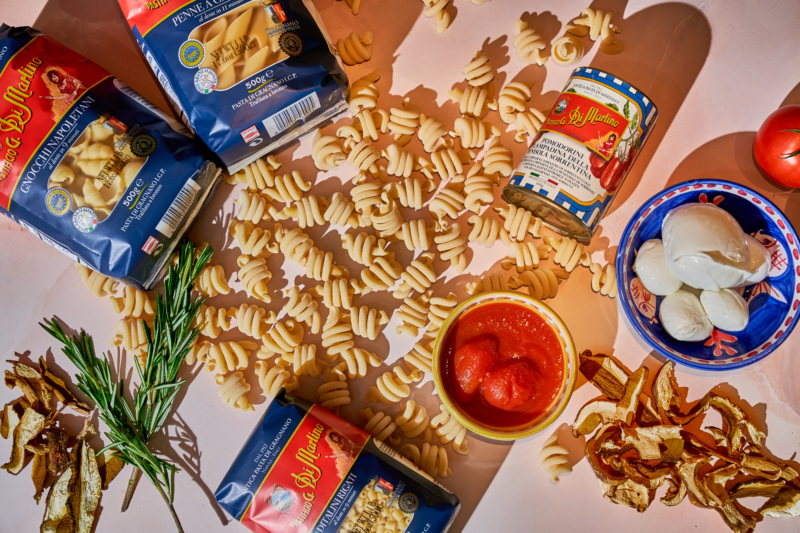
2. It’s all about making pairs: 126 pasta shapes with matching sauces.
From the large tubes of calamaraza invented by his grandfather in 1960 to the wavy-edged manfredine, each pasta shape serves a purpose and requires particular handling, says Di Martino. In Italy, Di Martino says most households hold onto about 15 different pasta shapes at any given time, and he wants to bring that kind of fluency (and abundance) to New Yorkers’ pantries, as well as inform them about the best pairings for their pasta — all 126 of them.
The spaghettini, for instance, runs brittle at 1.5 millimeters thick, and so it’s paired lightly with lemon. “If you use the wrong shape, like the penne, you will never feel the delicacy of the lemon,” he explains. Robust pasta shapes can hold up to rich, thick sauces, hence there’s vermicelli finished in an anchovy, butter, and truffle sauce, and a fresine (a traditional Gragnano pasta that’s thicker and wider than linguine) simmered in a lobster bisque for the last few minutes before reaching the diner.
“We use different shapes to partner with different recipes — a new shape with a new thickness with a new way of attracting the sauce with a new way of being cooked — so we never get bored.” La Devozione plans to shuffle through permutations of all their 126 pasta shapes with varied proteins and seasonal produce from the Union Square Market as part of their Oval tasting menu, as well as A Tavola’s a la carte options.
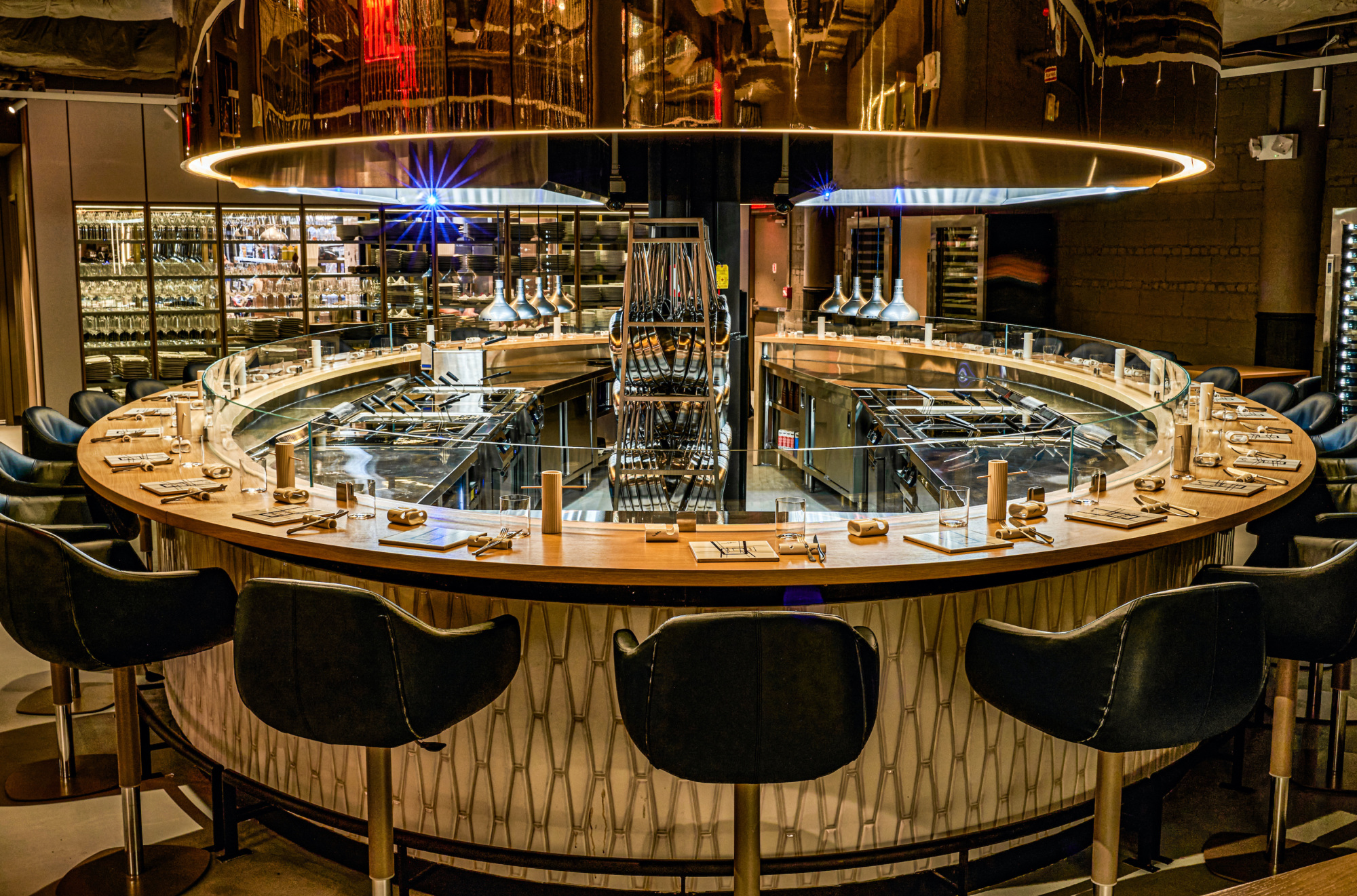
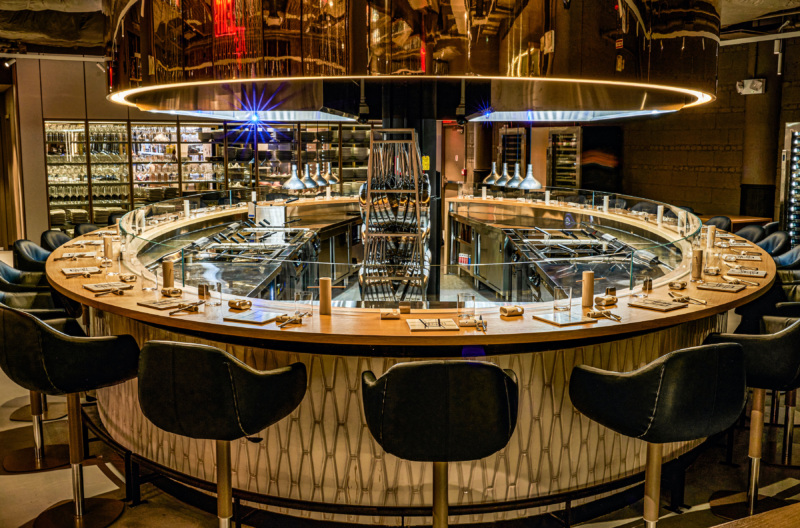
3. On the tasting menu, the approach to pasta is irreverent.
The chefs behind La Devozione’s Oval tasting menu simmer it, dehydrate it, grind it, and turn it into pasta chips (spaghetti aglio e olio). Salt water is too obvious a play, so they also cook their pasta in a lemon leaf infusion (spaghettini al limone) or coffee (pacchero, before it’s dried and fried puffy).
Most of the dishes on the $165 nine-course tasting menu come from Michelin-starred chef Peppe Guida in Italy, but New York-based chefs Alessio Rossetti and Matteo Limoli are the ones leading the kitchen at the Oval.
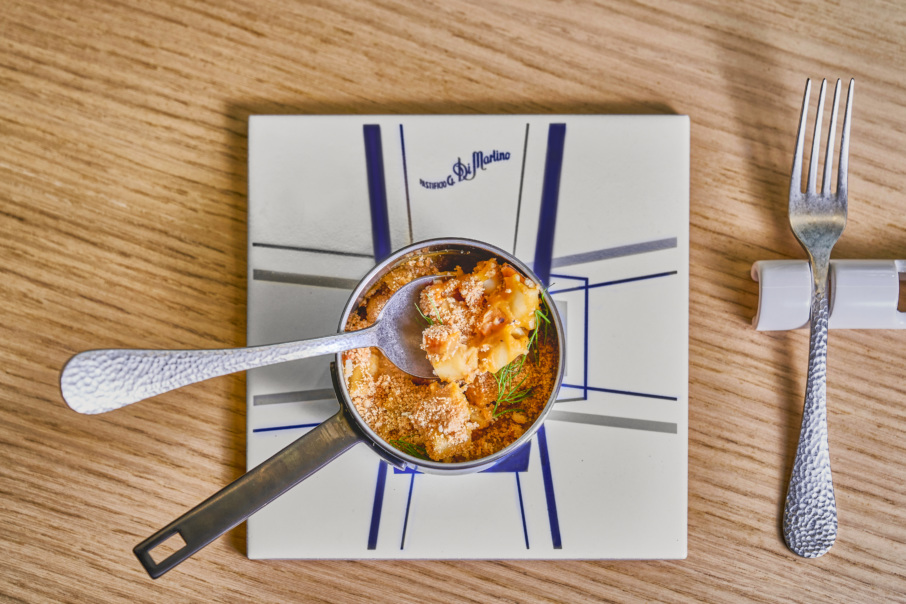
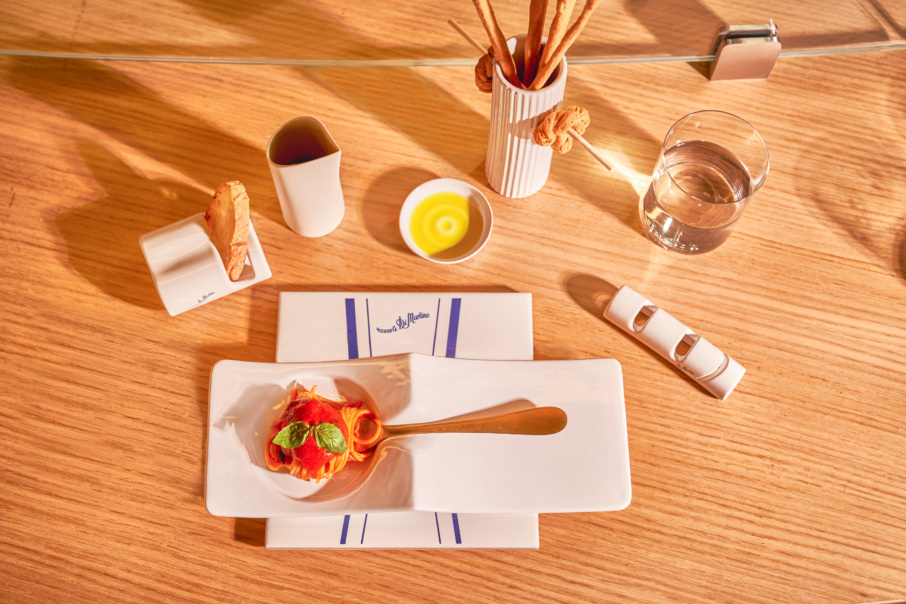
4. They play audaciously with vegetables, too.
The chefs destroy and recreate veggies here, too. Bitter oranges are baked for three days at 60 degrees Celsius (140 degrees Fahrenheit) until they’re hard, then grated into a powder that perfumes a 12-hour-roasted duck. In the seasonal lumachine (a small tube that’s bent at the middle, closed on one side, and named after snails because of the shape resemblance) dish, Limoli dehydrates a butternut squash, reconstitutes it with a broth of oyster mushroom stems, onions, carrots, and soy sauce, and then blends it all together for a savory take on the sweet squash. The lumachine is cooked in this puree. For the garnish, he takes the remaining mushroom tops, soaks them in soy sauce overnight, and then dries them up in the oven like chips. “There’s a super strong umami [flavor] and the dried mushrooms represent the leaves when they fall off the tree,” says Limoli.
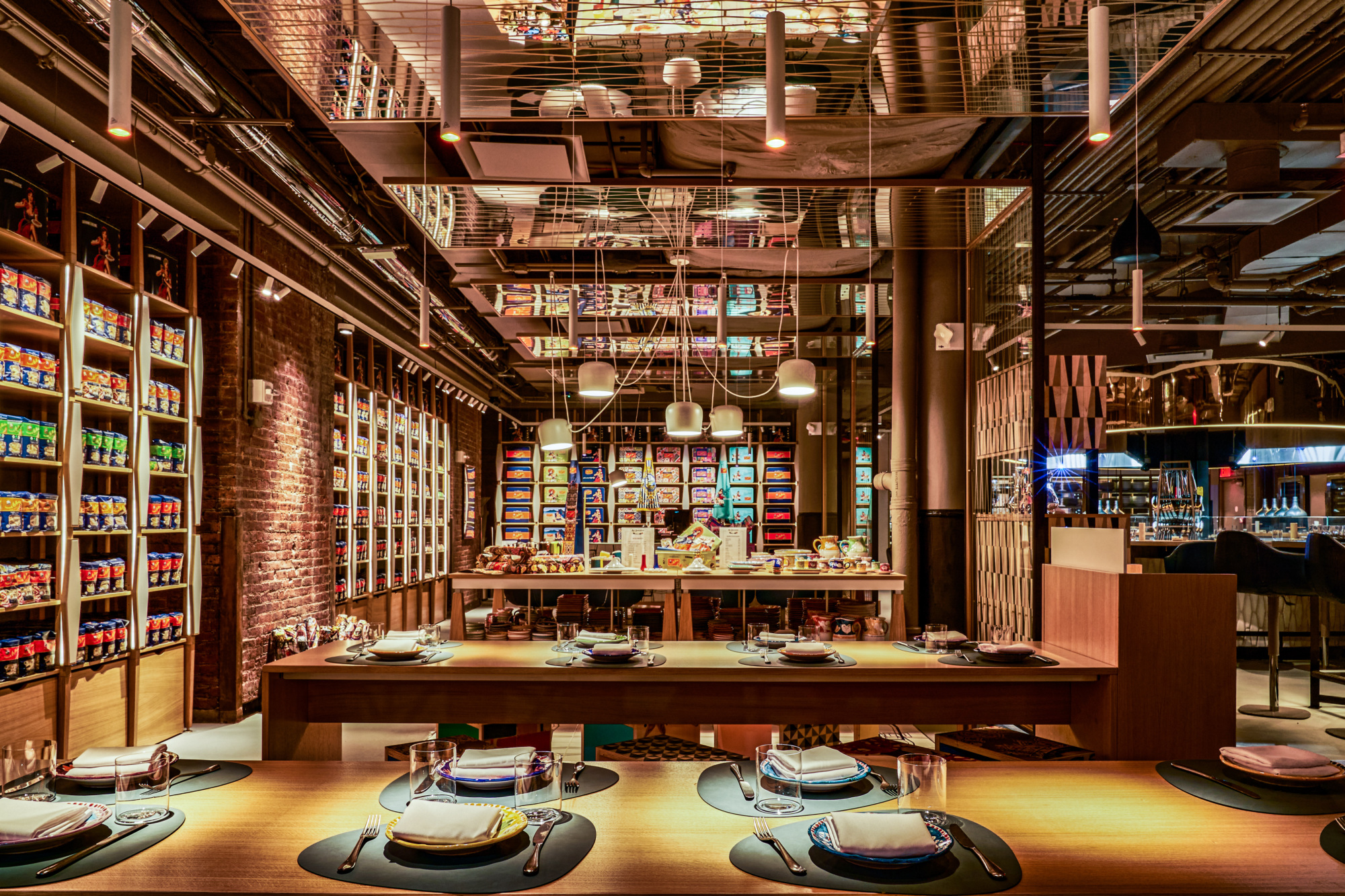
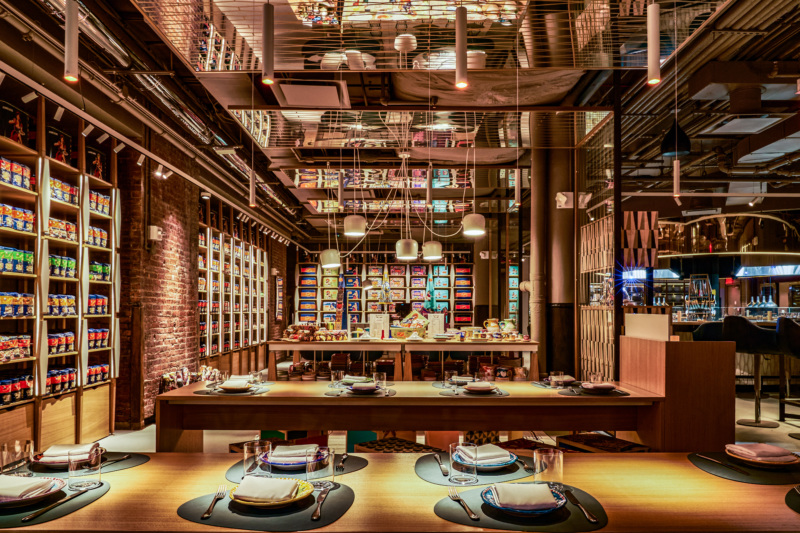
5. The lightbulb tomato is queen here.
They’re scrupulous about their tomatoes, specifically the organic “lampadina” (lightbulb) tomato cultivated on the Dama farm amid the nitrate-heavy soils of the Gragnano hills. Di Martino compared the proportion of water to pulp among various tomatoes, and concluded that he’d refrain from using both the San Marzano tomato (a very large tomato that has a higher percentage of water, and with it, slightly more acidity), and small, pulp-heavy cherry tomatoes. The tapered end and round bottom of the lightbulb tomatoes present the best of both worlds, he says.
“They are fantastically sweet,” Di Martino says. And these tomatoes are the queen of La Devozione’s namesake spaghetti al pomodoro dish, in which the noodle’s 1.7 millimeter thickness was deemed the best match for the tomatoes, which are cooked for only four minutes to maximize their natural flavor.
The royal tomatoes even make their way into the bar, which is helmed by NoMad hotel restaurant and Atelier Crenn alumnus Cristhian Rodriguez. For his “tomato water,” he blends tomatoes and drains them through cheesecloth for a day. “At the end, you get this beautiful clear liquid, which we then season with basil and a little bit of salt.” It makes an appearance in the Di Martini and the alcohol-free Commedia Al Pomodoro.
“Tomato water here is everybody’s obsession right now,” Rodriguez says.
La Devozione is open daily from 12 noon to 8 p.m. The Oval takes reservations from 5:30 to 9:30 p.m. Wednesdays through Sundays.
Caroline Shin is a food journalist, and founder of the Cooking with Granny video and workshop series spotlighting immigrant grandmothers. Watch her award-winning show on YouTube, and follow her on Instagram @CookingWGranny and @CarolineStoriesNYC. Follow @Resy, too.


